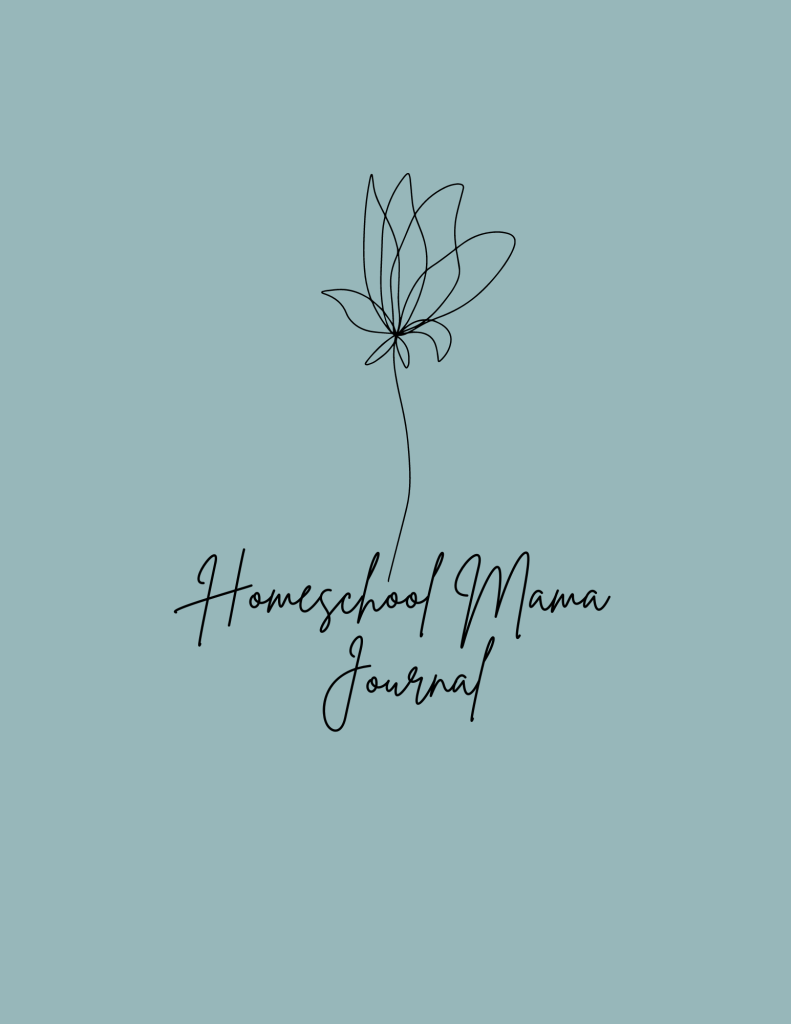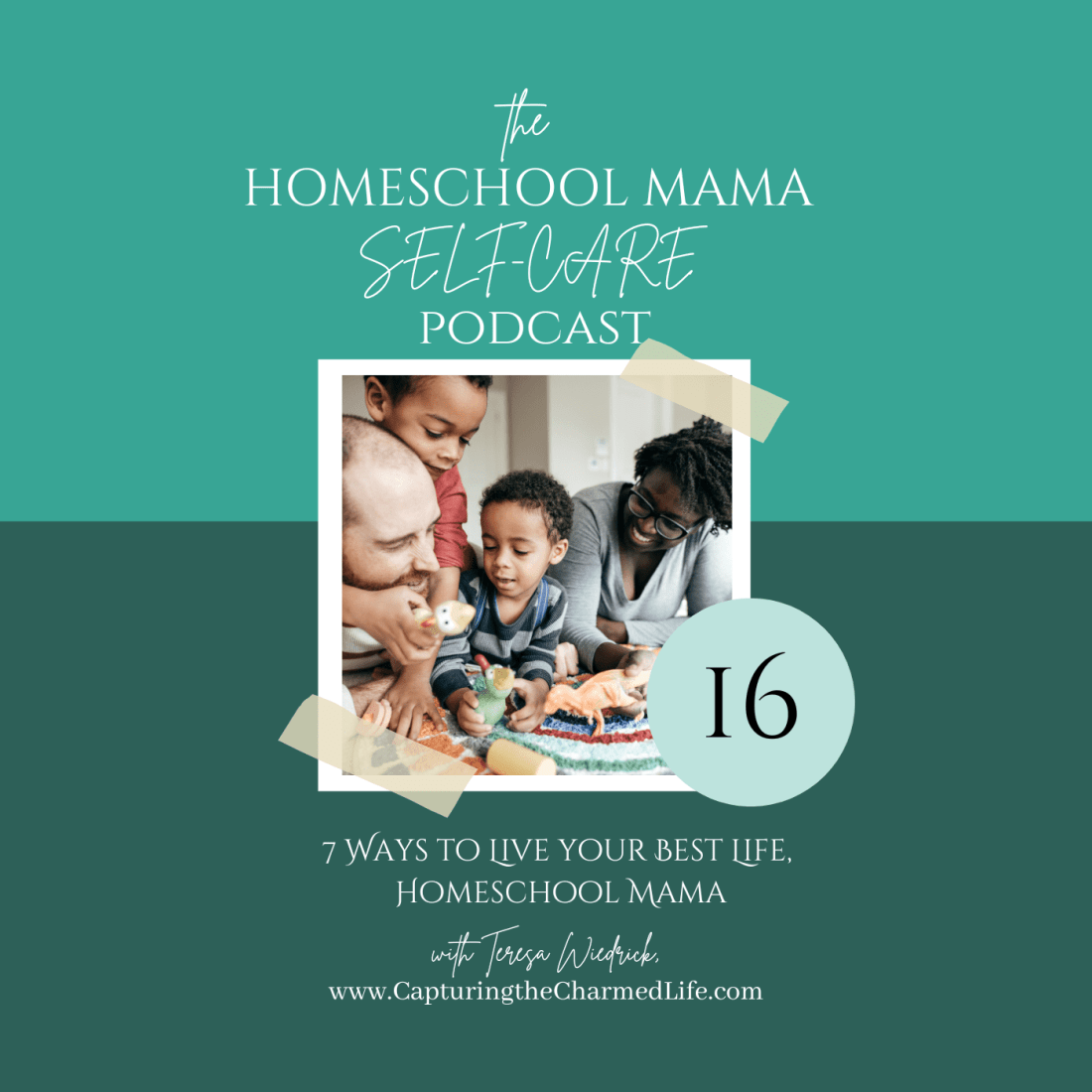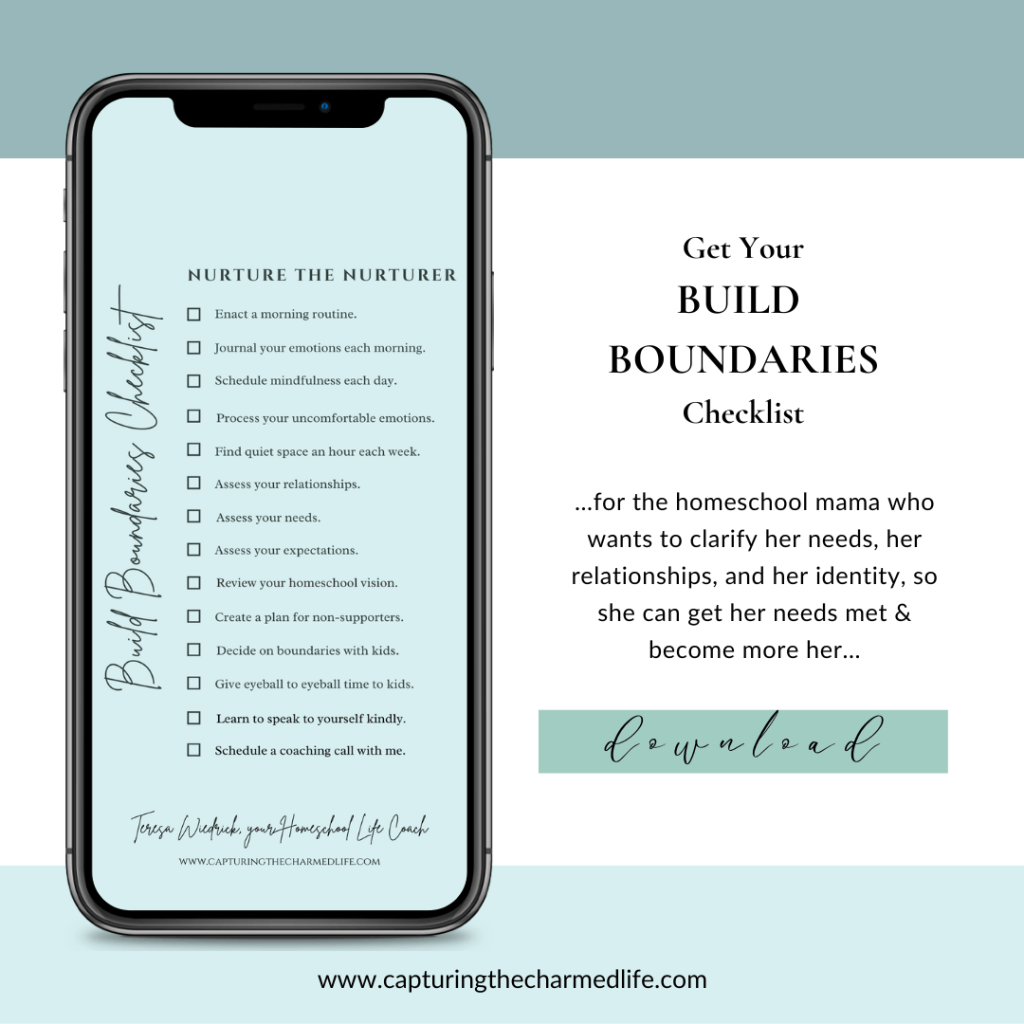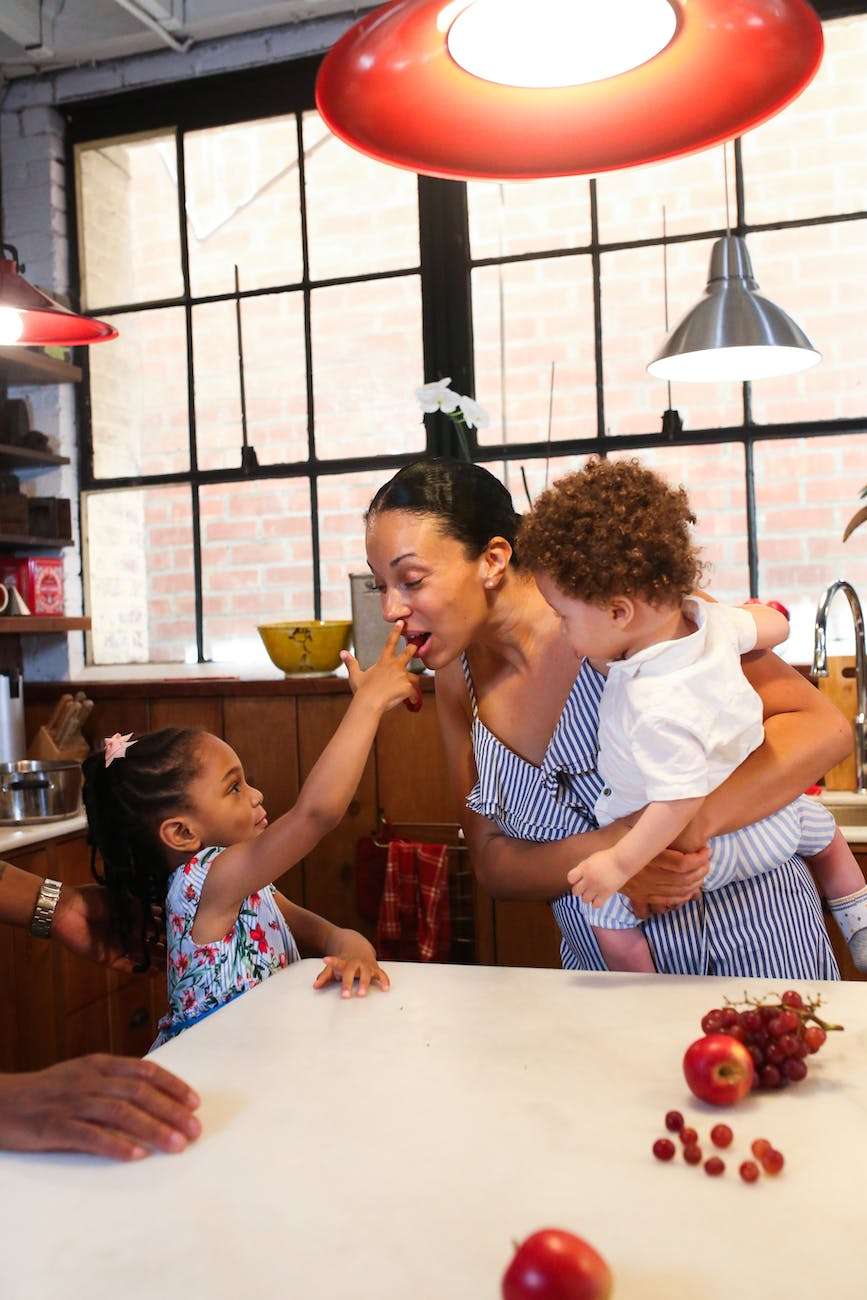Podcast: Play in new window | Download
When I began homeschooling, I was on a mission: to give my kids the most individualized education I could provide and also give them everything I never had.
Tall orders. Kinda like ordering a caramel Frappuccino, quarter sweet, with whip, but not milk whip, just oat whip, with sprinkles, but only sprinkles on the left side. And I’ll take that in a cup, but no name on the cup, just my initials, oh and make it half hot.
Tall orders, but I sure tried.
There are seven ways that I’ve learned I can live my best homeschool mom life.
The self-care for the homeschool mom I’m pointing at (me)!
And possibly, probably, you too.
Naturally, I learned a few things as I tried to serve up that perfectly decadent drink to my homeschool family.
1. I learned I had wildly unrealistic expectations (especially around how much I could get done in a day).
Therefore, I had a hard time getting anywhere on time.
I didn’t have a natural ability to get myself and my four kids anywhere before three in the afternoon, because I had sixty-two things still to do that needed to be accomplished that day.
I could hardly believe that just a few years prior, I had been able to get two kids out the door to their private school before 8 in the morning. How did I even do that?
This inability to manage my time, and the unrealistic expectations I had each day, made my experience of homeschooling unhappy making.
I felt stressed every time I left the house (and it wasn’t because I was worried if the kids were in clean pajamas or whether they were bringing the right instrument to their music practice.)
Straight up, I just felt overwhelmed by the expectations to do all the things and get all the things done (even if they were my expectations and my self-prescribed list).
I learned that when we clarify how much time we have in a day, when we get clear on how much time activities take, and when we create margins to address unexpected events (because there were always unexpected events), I would feel more at ease with the time I had and use it on purpose.
You can use the Time Audit to address your unrealistic expectations as I did:
2. Self-care for the homeschool mom means I needed to take time away.
One homeschool day, after our morning read aloud, I rolled my chair back and forth between three little girls doing their cursive, math workbooks, and spelling pages.
My toddler was mostly satisfied strapped into his highchair with a bowl of cheerios, tossing them off the side until he needed more, and he made sure I knew when he did.
I was not okay and I felt overwhelmed.
If only I could have had a break, a little quiet, to sequester myself in the corner chair of my bedroom, pull out the box of Italian cookies hidden under my cushion, and scroll Pinterest for a few mindless minutes.
I needed to be alone. (And I needed to do it regularly).
And I needed a breather.
Of course, I wanted to be with my children. But I needed to be quietly alone at times too.
When I could take those rare moments away, even when I was just at the grocery store by myself, I could return after an hour and feel a whole lot more present with my kids.
3. I learned I had to build boundaries for my homeschool & my life.
I have been a mother for over twenty-one years, but not until my oldest daughter was 3 years old did I begin to build boundaries.
Building boundaries enabled me to spend more time considering myself and encouraged me to become more me.
Before I built boundaries, I spent too much time thinking about…
- what other people thought about me (or my homeschool),
- knowing that I needed time alone but not getting it,
- sitting on Facebook when I should have been eyeball-to-eyeball with my kids,
- recognizing that I needed time spent developing my interests but not sure if I would have to wait a couple decades,
- spending more time doing extracurriculars than I wanted because I assumed this was the right way to homeschool,
- giving my time away to meaningful things, but not the most important things,
- creating 3-point essays (in my head) in response to unsupportive questions about my homeschool choice,
- feeling exhausted by conflict & dissonance with my partner,
- knowing I was not showing up as I wanted with my kids but not sure why
- feeling ashamed of how reactive I was with my kids,
- wondering if my kids were mistreating me, but I could not determine if that was just them being kids.
The process was messy, as you can imagine because every relationship I engaged in, every activity I chose, and every mindset I assumed, was dissected.
Am I really me in these relationships, these activities, and these mindsets?
I would learn that I was not me. I did not even know who I was. (Except for someone who was always thinking defensively.)
And though it was terribly uncomfortable, it was even scary, it began a domino drop of false identity and false self.
Let me explain. I had to own who I was and why I was on the planet.
And with a lot of work in the interior, I have come home to me. (The ultimate self-care for the homeschool mom).
From that time on, I have been drawn to authenticity, freedom, and purpose.
Boundaries & self-compassion have required me to assess my relationship with others, but most importantly, my relationship with myself.
- I have learned that building and firming boundaries have clarified my identity.
- That building and firming boundaries decrease my reactivity.
- I have learned that building and firming boundaries get me clearer on my purpose (& that I simply can NOT be everyone for everybody, not even to my kids all the time), but I am (most of the time) fully me.
I discovered that building and firming boundaries was a long-term process with many zigs and zags along the way, but every step brought me closer to me.
And now I know I have come home to me.
Get the Boundary Checklist to begin your journey to come home to you:
4. I learned I had to build self-awareness strategies into my days so I could address my big emotions.
Journaling is a profound self-awareness strategy. It is a powerful tool for understanding ourselves as we sit and listen to our uncomfortable feelings.
You can journal in several ways as a homeschool mama:
- Journal to record and compile a memoir of stories at the end of your homeschool years, about the kids and what you did
- You can have a record of the exhausting first parenting years and all those memories.
- You can have a record of the read alouds that remind you of kids playing with Legos on the floor beside you, or when you brought that book to your NYC trip, or when you read the first page of a few books so the kids could decide which book should be read next.
- Journal in your Daytimer the days you did science experiments that molded on your kitchen counter, warning your partner that you better not use everything on the kitchen counter for the stew.
- You can journal through photos that will jam your iCloud, and you will be grateful you did because over the course of three months, your eleven-year-old son will have sprouted two feet.
Over the years, one of the most profound benefits of journaling big emotions is that you will come to understand your emotional climate.
Whenever you are feeling triggered or intense (because there will be a couple times ), you can head to your journal nook and do an emotion dump.
1. First, take a deep slow breath and ask yourself:
- What are the various feelings I am experiencing right now?
- Where am I feeling them in my body?
- Why do I feel what I feel?
2. Second, tell yourself, “It’s okay that I’m feeling what I’m feeling.”
Accept all your feelings. Be gracious with yourself and do not judge your feelings as good or bad, rather, observe them instead. Feelings just are.
Humans have all sorts of feelings and even though you are superhuman (How do I know? You are a homeschool mama!) but you are still a human.
Because you are a human, you occasionally feel:
- disappointment
- disgust
- overwhelm
- sadness
- frustration
- contempt
- glee
- elation
- and a whole lotta other feelings too
Recognize that feelings often pass like clouds in the sky: they do not stay static.
Typically, a feeling will last not more than 90 seconds.
So, all we must do is learn to manage that one 90-second feeling. (We can usually bare feeling most things for 90 seconds if we know it’ll be just 90 seconds.)
Stay with the feeling. And breathe. Slowly.
- Breathe in for four beats.
- Hold for four beats.
- Breathe out for four beats.
- Hold for four beats.
Allow the feeling to just be until it leaves, or until it passes with less intensity.
When you spend enough time assessing your emotional climate, you will get clearer on how to address your emotional triggers.
Sometimes we have not allowed ourselves to feel emotions, because others have not taught us to hold a safe space for our emotions.
Because we have not learned to be with them ourselves, we must learn to do this for ourselves.
(And since you have a child or two or twelve, suddenly you realize that you have more than your own feelings to hold a safe space for.)
There are a whole lotta feelings to hold. Yes, you might be thinking this is difficult. (This is as difficult to practice as it sounds, in the beginning.)
Because you have not practiced doing this for yourself, how will you do it for your kids too?
You can. (Ask me how I know😉). But you gotta start with you.
However, you engage your own emotions in how you will engage theirs.
When you have a moment of frustration with a child and when you have a chance to discuss it with someone objective, someone that genuinely wants you to work through your frustration, you feel heard, seen, and witnessed.
That person did not magically swipe the discomfort or frustration away, they simply witnessed your challenge, issue, or moment.
You will gain clarity to engage in the next step. By allowing yourself to be witnessed, clarity rises.
That is what you can practice for yourself too.
See yourself, listen to yourself, and witness yourself.
You can do this in a few ways:
- You can speak to your journal (aka write your stories as you are feeling them in your journal).
- Or you can head to the mirror and speak to yourself as though your friend is standing sad or frustrated in front of you.
- You can speak with me, and I’ll hold space for your needs and concerns, make you feel seen through reflective listening, and together, we can create a plan to address your challenges.
- You can use the Big Emotions Audit to get clearer on your triggers, frustrations, and big emotions.
We have developed an emotional climate over a lifetime and become intimately familiar with certain feelings under certain circumstances, but those patterns do not have to continue.
If you want to address your triggers, frustrations, and big emotions, use the Big Emotions Audit for the homeschool mamas.
5. Self-care for the homeschool mom means I don’t need to homeschool alone.
In the first few years of homeschooling, I had few support people in my homeschool.
Homeschooling was a new concept for my family and some of my family was against it before I discovered it.
The person who supported my homeschool choice was a homeschool mama of five (whom I did not know previously). This homeschool mom managed a local curriculum lending library.
Linda and I did not have the same kids, we did not have the same educational approach, and we did not have the same framework for life.
But my weekly visits to her home were gold.
She imparted random nuggets of wisdom and encouragement that I just did not have. (And I really needed clarity and confidence.)
I’ve learned that I’m not the only homeschool mama without support.
So, I now offer support and community to homeschool mamas. (If you are looking for support and community, I invite you to the Homeschool Mama Patreon Support Group).
We get together to chat, connect, and share real stuff from our real homeschool lives.
This can be a time just to get to know each other, talk about our homeschool stuff, or talk about the inner work required to show up on purpose in our homeschools.
Whatever comes up comes up.
In the Support Group, you can access discounts on group coaching, courses, and one-on-one sessions.
Above all, you get an authentic and meaningful connection and coaching to shed what is not working in your homeschool and life so you can live authentically, confidently, and purposefully in your homeschool life too.
If this strikes you as something you might need, join me:
6. My homeschool years taught me that parenting is not a thing.
This construct (parenting) that someone can strategize the outcomes for their children (like a chess game), as though our kids are products, is only a thing we can create in a book or on a chess board.
Move enough pieces in just the right way, and you will end up with a perfect human product, a grown-up.
(No, no you will not. It just doesn’t work like that.)
I became a mother almost 22 years ago and when that sweet baby girl entered my world, I was beyond thrilled.
My entire childhood, I wanted to be a mother.
- I researched my kids’ names (which were planned before I entered adolescence),
- read about how to cook before I was allowed my family’s kitchen,
- learned how to organize my days with kids,
- researched gardening,
- created meal plans,
- and I even learned how to design & decorate houses (via the Sears catalog).
And in the years before I deleted parenting books from my life, I read all things parenting.
Parenting books gave me ideas on how to create a grown, competent, independent, and relatable human being.
(In real life, those formulaic intentions and ideas did not work like algebraic equations.)
Though I carried and grew five human beings inside me, birthed four of them, and kept each of them from endangering themselves (some were more difficult to protect than others), my role as mother was not about creating, shaping, and forming those human beings into anything.
What I have ever-so-slowly come to understand about my mothering role is that I was placed in my children’s lives to nurture them, validate them, listen to them, lead them, encourage them to feel what they feel, and walk alongside them despite my incompleteness and theirs.
I’ve learned they were placed in my life to learn from, and they were placed in my life to learn from me too.
(Just not via strategy).
I wish someone had told me that I could only prepare by learning to be a relational human being myself.
And to accept that I could not figure all that out in time for my first child.
The mothering role is a role where I’ve been chosen to be part of another human being’s life and that smaller human being will grow up and learn right alongside me.
7. I learned that I did not have a vision for my life outside my mom role.
My only vision was to provide and support other people in what they needed.
I knew that I needed to be kind and serve others, especially my kids (because that is what a good mother should do, right?)
Of course, I was continually on the search for activities and learning opportunities for my kids. I was on an endless search to make their childhoods marvelous, remarkable, memorable, and beautiful.
I did not consider who I was outside that homeschool mom role.
Did I have a seat at the homeschool table to learn and become too?
If someone needed me and felt compelled to tell me…I started with their needs.
I was on it.
Because I did not begin life with security and equilibrium, I was always grasping for validation, for someone to tell me I was okay, but I did not know how to do that within myself.
And so, when I became a homeschool mom, I took on that valued role with a nurturing vengeance.
So, I had to decide who I was, then how I wanted to show up for my family & myself on purpose.
I have learned since that when I was intentional about developing and nurturing myself, I brought the BEST of me to my family and that I could more closely address what my family needed.
So though I began homeschooling with the notion that I was to nurture my kids with decadence like those that order a caramel frappuccino (at the beginning of this post), I learned that I needed to nurture the nurturer so I could nurture my homeschool kids and I’d be living my best life too!

A Daily Homeschool Mama Journal for You!
Introducing the Daily Homeschool Mama Journal, your perfect companion to build time for yourself! With daily journal questions, weekly planner, and self-care activities, enhance your self-awareness and explore your identity while taking care of yourself. Start practicing self-awareness today!
People also ask:
- how to positively influence my homeschool mama thoughts so I can enjoy my homeschool
- Homeschool Help for Mom: Create a Plan for your Big Emotions
- How to Address Homeschool Mama’s Big Emotions: Sharpen the Tools in your Big Emotion Toolbox
- A Homeschool Mom Podcast for Boundary Breakthrough
- Self-Compassion for the Homeschool Mama: How to Teach it to Yourself
Call to Adventure by Kevin MacLeod
Link: https://incompetech.filmmusic.io/song/3470-call-to-adventure
License: http://creativecommons.org/licenses/by/4.0/







